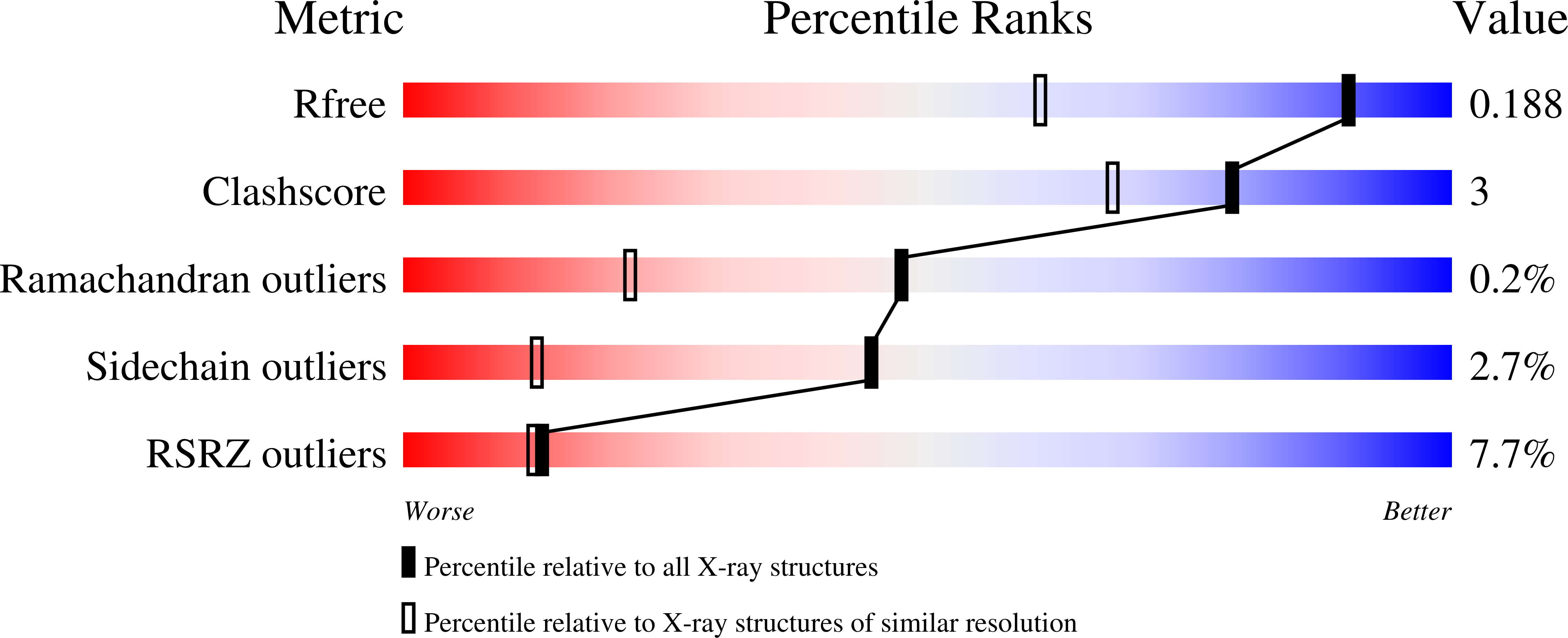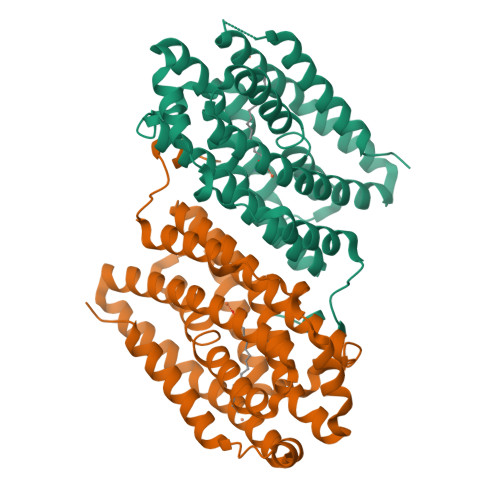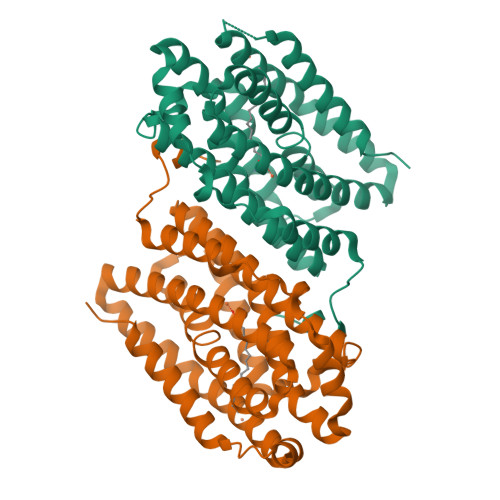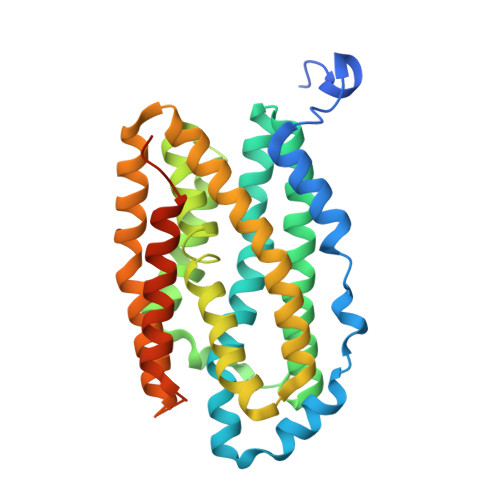Assembly of a heterodinuclear Mn/Fe cofactor is coupled to tyrosine-valine ether cross-link formation in the R2-like ligand-binding oxidase.
Griese, J.J., Kositzki, R., Haumann, M., Hogbom, M.(2019) J Biol Inorg Chem 24: 211-221
- PubMed: 30689052
- DOI: https://doi.org/10.1007/s00775-019-01639-4
- Primary Citation of Related Structures:
6F65, 6F6B, 6F6L, 6F6M - PubMed Abstract:
R2-like ligand-binding oxidases (R2lox) assemble a heterodinuclear Mn/Fe cofactor which performs reductive dioxygen (O 2 ) activation, catalyzes formation of a tyrosine-valine ether cross-link in the protein scaffold, and binds a fatty acid in a putative substrate channel. We have previously shown that the N-terminal metal binding site 1 is unspecific for manganese or iron in the absence of O 2 , but prefers manganese in the presence of O 2 , whereas the C-terminal site 2 is specific for iron. Here, we analyze the effects of amino acid exchanges in the cofactor environment on cofactor assembly and metalation specificity using X-ray crystallography, X-ray absorption spectroscopy, and metal quantification. We find that exchange of either the cross-linking tyrosine or the valine, regardless of whether the mutation still allows cross-link formation or not, results in unspecific manganese or iron binding at site 1 both in the absence or presence of O 2 , while site 2 still prefers iron as in the wild-type. In contrast, a mutation that blocks binding of the fatty acid does not affect the metal specificity of either site under anoxic or aerobic conditions, and cross-link formation is still observed. All variants assemble a dinuclear trivalent metal cofactor in the aerobic resting state, independently of cross-link formation. These findings imply that the cross-link residues are required to achieve the preference for manganese in site 1 in the presence of O 2 . The metalation specificity, therefore, appears to be established during the redox reactions leading to cross-link formation.
Organizational Affiliation:
Department of Biochemistry and Biophysics, Stockholm University, 106 91, Stockholm, Sweden. julia.griese@icm.uu.se.





















